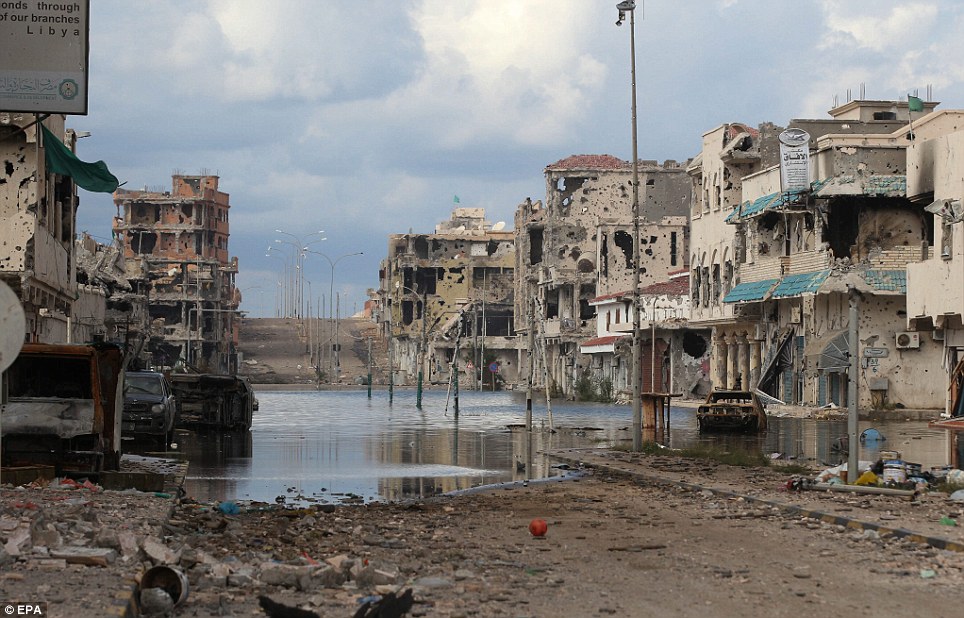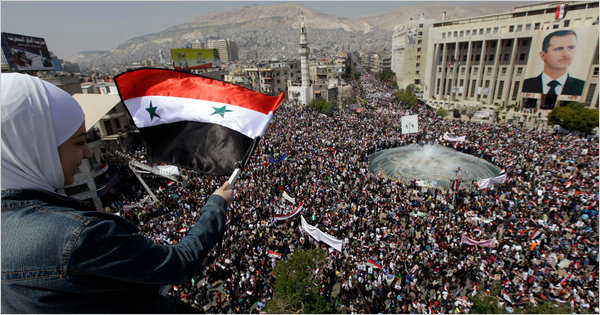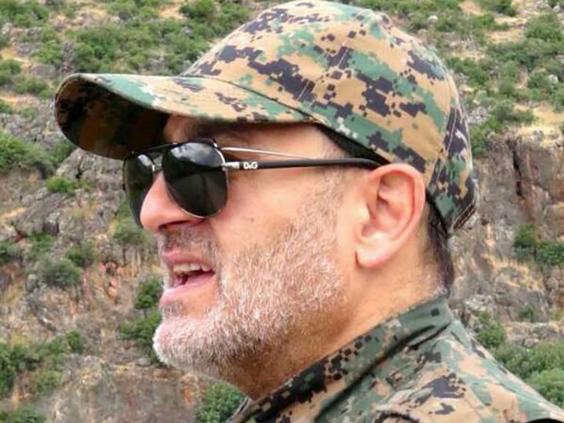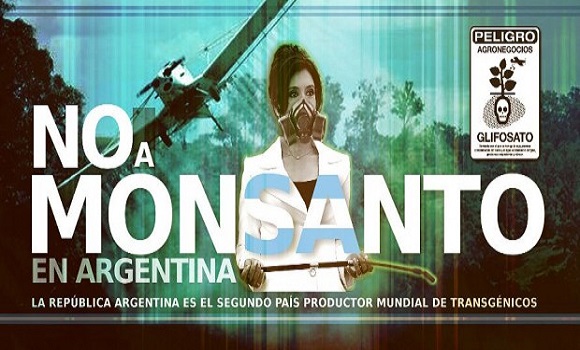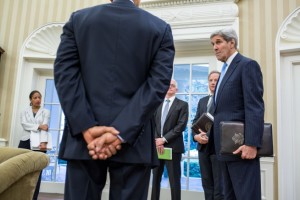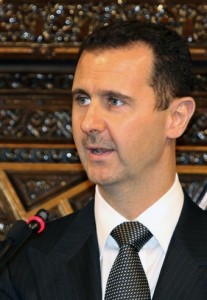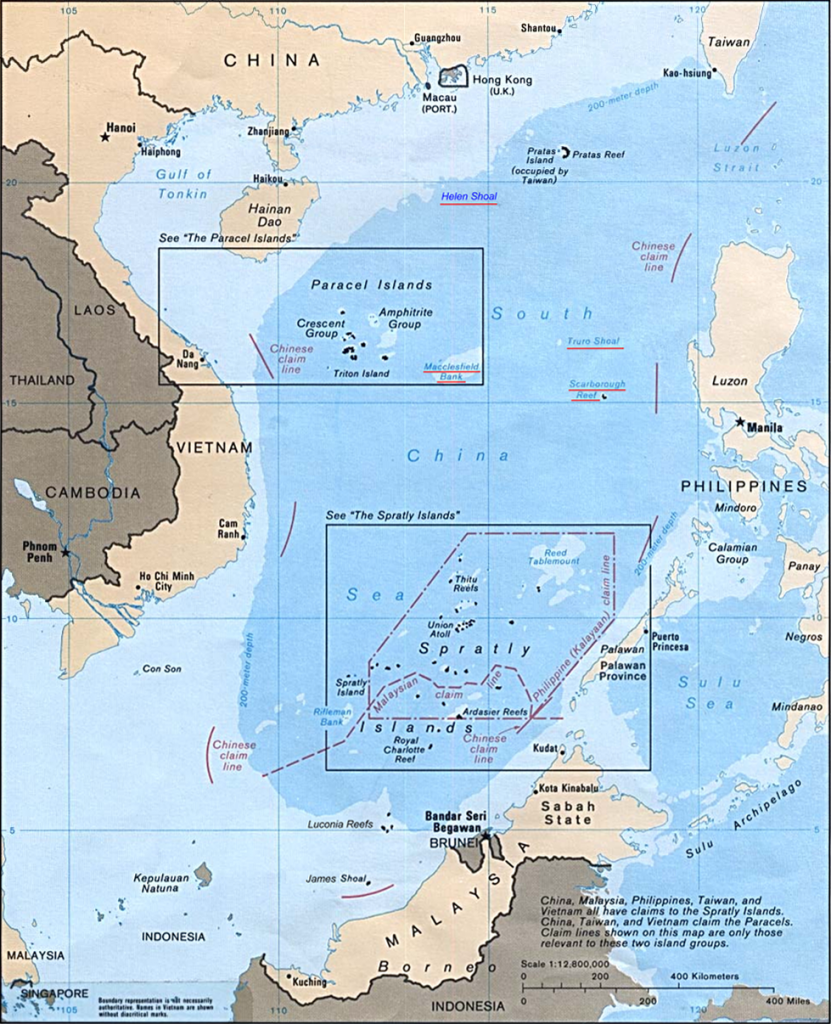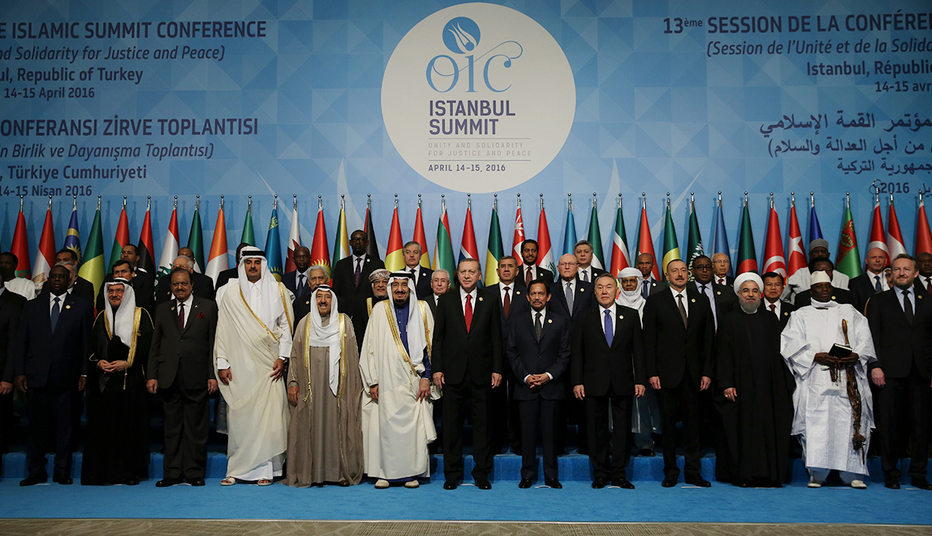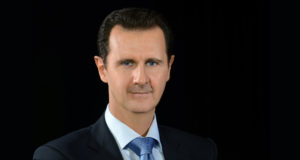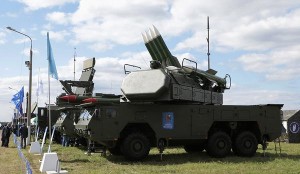Interview with journalist, squatter and housing activist, Frank Morales, on the housing crisis and the origins and creation of “homelessness”.
Morales’ direct action for housing in the South Bronx and Lower East Side of Manhattan in the late 1970s; bank redlining of loans to certain neighborhoods; Chapter 7 of the 1968 Kerner Commission Report; spatial de-concentration dispersal of the urban poor as a counter ]insurgency strategy; “The Crisis of Democracy: Report on the Governability of Democracies to the Trilateral Commission” by Samuel P. Huntington (1975); creation of the shelter system under FEMA.
Originally Aired: November 5, 2003.
This is Guns and Butter.
There was too much democracy. Therefore, that was the reason for this massive protest, the anti-war movement, etc. Their analysis of the ‘60s had to do all with ‘too much democracy. We have to shrink democracy.’ So the shrinking of democracy, the analogy is planned shrinkage on the housing front. It’s to undercut the ability of people to organize if you take out their house.
I’m Bonnie Faulkner. Today on Guns and Butter, Frank Morales. Today’s show: The Squatter Movement: Seizing Housing. Frank Morales is a writer and researcher whose work has been published in Covert Action Quarterly, Global Outlook and Midnight Notes. He is the author of Police State America: U.S. Military Civil Disturbance Planning. He has written numerous articles including Non-Lethal Warfare, Operation Garden Plot, The War at Home,Operations Other Than War and Military Operations in Urban Terrain. Frank Morales is a New York City Lower East Side activist and squatter. Today we explore his work as a grassroots housing activist and leader of the squatter movement in New York City.
* * * * *
Bonnie Faulkner: Frank Morales, welcome.
Frank Morales: Hi.
Bonnie Faulkner: Frank, in addition to being a writer and a researcher, you describe yourself as a New York City Lower East Side squatter. What is a squatter?
Frank Morales: Squatter, the way I use the term, is a person or a group of people who through direct action secure a place to live. Specifically, on the Lower East Side here and in the Bronx, which is where I started squatting back in the early ‘80s, we mean taking abandoned properties through seizing that property in the interest of creating housing and doing that collectively, and having people who do this collectively organize the resources and the people power to renovate the buildings, to bring them up to code, because a lot of these buildings are trashed in the process of being abandoned. They’ve either been burned or whatever, so it requires a lot of work.
Basically, by squatting what we mean is direct action for housing. More philosophically, is that the only way to ensure that people have a human right to a home and that doesn’t remain just an abstract concept, is to seize the housing. That kind of puts flesh on the bones of the whole issue of housing being a human right. It makes it real through the action of squatting, of realizing that right.
Bonnie Faulkner: When did you start doing this?
Frank Morales: I started squatting in 1979 in the South Bronx. The South Bronx is an area where there was quite a lot of displacement and destruction of people’s housing. I don’t know if people are familiar on the West Coast with some of the imagery of places like the South Bronx where, if you can just envision, lot after lot, block after block just leveled as though a bomb had hit. There would be whole neighborhoods, you could stand at four corners in the Bronx and look in four directions and see nothing but leveled, empty brick-strewn lots where people once lived.
South Bronx went through this whole process of what we referred to and still do as spatial reconcentration, a form of planned shrinkage, so that when we were up there, there were a number of abandoned buildings that were sealed up and ostensibly were owned by the city. We saw that under Reaganism, there was no way that people were going to be able to get affordable housing other than through direct action, other than through seizing the housing, renovating it and then defending it, collectively, so that’s what we began to do.
I started that in 1979 in the South Bronx. We took over two buildings there with people in the neighborhood and created housing, and also utilized the storefronts for people’s businesses and drop-in centers and that kind of thing. The idea is that when people do it, you’re immediately put in a situation of illegality, obviously, because under capitalism you worship private property, so people didn’t understand in some cases what we were trying to do. But we always felt that people had a moral right which surpasses the right to make profit, the right to survive, the right to life, and so when we took the buildings we would organize to defend them because we knew that there would be a reaction, and there was.
So one of the main aspects of organizing around squatting then and still now was to organize the ability to defend yourself. So we relied a lot on each other, building networks with people who were both in the squats and in the neighborhoods that would come out and defend peoples’ right to a home like that.
So I started doing squatting up in the South Bronx at that point and moved down to the Lower East Side in 1985, because I grew up in this neighborhood so I came back here for that.
Bonnie Faulkner: Were you an organized group that did this when you started doing it in 1979?
Frank Morales: No. We were neighborhood people who just saw that the buildings were sitting there, and that it was clear that more and more people were being displaced. If you lived in the Bronx or in poor communities throughout the country you could see that people were being pushed out, neighborhoods were burning down, banks were disinvesting from neighborhoods.
There was a synergy of effects that was unleashed against these communities – from my perspective, a conscious strategy to depopulate the urban centers of people following the late-‘60s. They were seen as the terrain of insurrection and therefore the strategies were enacted to, the phrase being “spatially de-concentrate,” these communities.
We recognized that the only way we were going to survive the effort to displace us from these communities – these are poor, working-class poor people and artists and so forth and so on – was to seize the buildings directly, manage them ourselves and we’ve proven that people can do this.
People tend to be able to cooperate if given an opportunity to work collectively together. In fact, that’s one of the predominant features of being human. If you allow for that then it’s amazing what people can do. So people manage these buildings and that’s how the thing got going in the Bronx. In the early stages there was a lot of community support, which was important to sustain them, local benefits in the neighborhood to raise money. Don’t forget, in ’79 and ’80, hip hop was just really getting going up in this neighborhood and so we had a lot of connections with people in that area who would do a lot of stuff with us and we’d raise money and people who knew other people who needed housing were able to move into the houses and so forth.
So I’ve always advocated that people who are having difficulty affording where they’re living, there are approaches that deal with rent strikes and seizing the occupied and vacant apartments and other kinds of strategies; but in terms of the abandonment situation in areas where there is abandonment and so forth, public entities, housing entities that have taken this property over and so on, they should take these properties and organize to defend them, and renovate them and create housing for people. Not as a way only to meet the short-term goal of creating housing for themselves and those that they’re working with, but also to put political pressure on the system which is set up right now to do nothing in terms of creating any kind of affordable housing for poor people.
There isn’t a penny of federal money that is going towards creating housing for the poor in this country. So the only way that people are going to get the kind of housing that they need rather than prisons and shelters, which is another kind of housing that the state is supplying, they’re going to have to take it through direct action. So that’s what we started doing in the Bronx and then later on down here in the Lower East Side.
Bonnie Faulkner: How would you do this? You would find an abandoned, boarded-up building and what? Just open it up and move in?
Frank Morales: Yeah. The way that we would do it is that … I’ve given you kind of a summary. We have a kind of an ABCs of this. We wrote up a lot of this stuff over the years and publish and give it out to people because there is a bit of a science to it, without sounding overly highfalutin. We would take buildings that look to be in decent shape and do a kind of reconnaissance. Have people go in and check them out, make sure that the buildings were structurally good, and we have friends who were architects and others that would help us do that. That would be in the early stage.
Then here in New York we were always telling people that what we were not about was creating some kind of public spectacle that would be symbolic squatting or something to create a protest and try to create a media event around making a demand of the city to provide housing, etc.
We were not about making demands. We were about basically working clandestinely to take the housing. Some of us have no confidence in the good will of the state to provide housing and so see the demands as really kind of useless. And so using the clandestine approach we would work in a building for one, two or three months before we effectively put on the front door, so to speak.
So we spent some time analyzing the situation in terms of ownership of the building and get that background information, organize groups of people who were compatible and who wanted to do this together. In the early stages here in New York, we would collect mail. Have people send mail to themselves or have others send mail at their address and meet the mailman on the street corner or something like this, and begin to create a legal case for residency in the building. Because as people began to move in and actually live there, the powers that be might be interested in pushing them out, and by creating a residency status as opposed to a trespass status, basically we took approaches that would ensure the most likely possibility of success. We were about creating housing. We weren’t about creating a political statement or symbolic this or symbolic that. We took a kind of a paced approach to securing buildings for the long term.
So after two, three months of clandestine kind of work within the building, both in terms of its immediate renovation, it’s immediate needs for electric and water, etc., etc., we would then go public, so to speak, and have the front door put on and kind of smoke out whatever opposition was going to be smoked out. At that point we’d be prepared to defend ourselves through having created some residency status there and having networked with people in the community to defend the building through public demonstrations and other kinds of approaches and all in all, to give it our best shot for maintaining, holding the buildings. And we were successful both in the South Bronx, in terms of the movement up there with People On the Move and some of the groups that were working up there on it.
Down here, in terms of some of the politics of this thing, we always felt that, and to this day believe, that the buildings should and are, in fact, autonomous, that we never had any central organizing umbrella for something like this. Each of the buildings was autonomous. The people that worked there and lived there ran it. There was no outside authority to tell them what to do, who to bring in or who to evict or how much money they should put in to renovating the building. So we always maintain a strict autonomy among the various buildings and so on.
But what was a centralizing element for us was the collective defense, so that what was referred to as our eviction watch network, which was the phone tree among other things, was a defense mechanism apparatus, if you will, of the squatter scene down here that essentially constituted our organization. And that was it. It was not that we had any kind of centralized organization.
We would have, obviously, a lot of sharing that happened between the buildings, and people would share tools and so forth and at our peak we were working in about 22 buildings here on the Lower East Side. We lost a number through arson. We lost some buildings through Giuliani and some of the other mayors. They brought tanks and helicopters and SWAT teams and various approaches. We would mount campaigns to try to push that back.
The long and short of it is that 11 buildings have survived the onslaught of both yuppiedom and police state attack here in the Lower East Side, and now, to bring you totally up to date on this, is that these 11 buildings have received some kind of normalization from the City, wherein the ownership of these buildings that we’re in, which we always felt was illegitimate anyway in terms of the City owning this or the City owning that, but from their point of view, title to our buildings has been transferred to this not-for-profit agency which ostensibly will manage our sort of finishing renovations in some of the buildings to bring us up to code, at which point the buildings will be transferred to us legally.
Bonnie Faulkner: It sounds like it’s been very successful. Frank, when you talk about collectively defending the buildings, what you mean then is if the police showed up and wanted to evict you that calls would go out and a large group of people would assemble, and what? Would that sort of intimidate the police?
Frank Morales: Well, yeah. It’s not about violence. We don’t possess the kind of artillery that the SWAT team has. In taking these buildings we’re not unconscious about what our status is in terms of the legal structure in this country, but we need to devise ways that we can defend ourselves. So we utilize different methods.
One of the things that we did early on was to create an eviction watch list that was a phone tree that connected all the people in the buildings. And as I said, at one point we had 20-plus buildings – and this is roughly 30, 40 people I guess per building, so it’s like that kind of network. And also people in the neighborhood. We would have a table on the corner of Tompkin Square Park on a Saturday afternoon and ask people who wanted to, to sign the eviction watch list so that in the event that we were being pushed out, they would come to defend us. So they would sign up. People would sign up, and if they couldn’t come then they would be put on a separate list that from work they could call the City authorities who were evicting us. So in other words, everybody who wanted to help out could help out, depending on where they were and what they could do and so forth.
It was a question of organizing for defense. Once people understood what you were doing they supported it. Obviously, the people in the buildings early on understood that, hey, if I don’t support you in your squat then you’re not going to support me in mine, so it was very basic there. So a bunch of people would come out. We would expect all the squatters to come out to support each other. That was the vibe among people. And that’s what happened. That’s why we were able to bring people out.
So if there were two or three cops and some city officials in front of a building standing there with a pad in their hand saying, “According to our records, this building belongs to so-and-so,” we’d say, “Well, look. We have mail, we reside here, we’ve been fixing this building up and we’re not leaving, period. And further than that, we’re not letting you in if you don’t have a warrant with somebody’s name on it.” We kind of trained ourselves to respond in this way, and little by little, people would start showing up. People would start chanting. We’d have a crew that had video cameras and they would be taking pictures of all these people.
Inevitably, the cops would kick it upstairs. They’d go to the phone and they’d call the sergeant or whomever they call and say, “Boss, we don’t know what to do with these guys, squatters. They seem to be – I don’t know. They have mail. They’ve got a Con Ed bill and I don’t know what to do.” They wouldn’t know what to do essentially because, again, when you come outside of the realm of the experience of the enemy, so to speak, they’re confused. They don’t really know how to respond to you. They’ve adapted over time but, again, in general, when you come outside the realm of their experience they don’t quite know how to respond to you, and that’s what happened.
So basically, at the point that the political nature of what we were doing kind of hit home to the powers that be down at City Hall, when it was clear to them that they needed to nip the thing in the bud, then they would, from the top down, instruct the local police to go about and try to push us out. They realized early on, because we would defend ourselves. All the buildings had barricades and we would have means of securing the building so that it wasn’t going to be easy. We made it very difficult and through letting the people know in the community and media releases to the press and so forth, just basically showing people that unless people stood up, there wasn’t going to be any housing for people, there wasn’t going to be the ability for people to meet their basic needs.
So we were trying to provide an example in some ways but mostly we were organizing to defend ourselves and it was effective to a large extent. We were able to maintain the buildings throughout a period of pretty intensive repression. From ’85 to ’90 we had a bunch of run-ins with the police as functionaries for the real estate industry or the various mayors’ political agendas or what have you.
Bonnie Faulkner: Who owns the buildings that you squat in?
Frank Morales: Who owns the buildings? Basically, when the abandonment took place, this whole planned shrinkage created all this abandoned housing, which I was alluding to earlier – because the process of squatting emerges out of a situation where there’s massive displacement, homelessness and so forth. That’s the context within which it takes place.
Bonnie Faulkner: But I mean who were the original owners of the buildings that you then moved into?
Frank Morales: Take the lower East Side here. In the ‘30s, ‘40s, ‘50s and the ‘60s, a lot of these buildings were owned by what we might refer to as small owners, like ma-and-pa owners. They’d have a building or whatever. Some time after the late ‘60s, where I was making the point before, there were a whole series of things that took place which made it very difficult for small owners to maintain their buildings.
Suddenly there were new taxes put on them, there were various courts set up. In New York City there was a court set up to bring in these small owners and take their buildings away from them for inability to pay taxes or in some cases, where the owners just threw their arms up because the neighborhoods were burning down around them and they just had to get rid of them or what have you.
All I’m saying is that the mechanism for the transfer of massive numbers of units from diversified small owners into the hands of one public entity took place from the early ‘70s right through the sort of middle and later ‘70s, and an agency was set up in New York here called Housing Preservation and Development, which is a misnomer, but that agency was set up to basically take in all of these properties that were transferred from small owners into what essentially was a public agency that was going to broker these buildings to the rich over time and land bank them.
So these abandoned buildings that were all cinder-blocked up were ostensibly owned by the City, by the so-called public entity, the Housing Preservation and Development, which along with the Housing Authority in the public housing, the projects, was the biggest landlord in New York. They had 100,000 units when we started taking buildings here on the Lower East Side. They owned those buildings ostensibly through this process, which we always maintained was illegitimate and illegal, but essentially that’s how the City became the “owner.”
Now, what they did with these buildings was just warehouse them. They didn’t invest a whole lot of money in upgrading them. They just put cinder blocks on them, very often did not put any kind of tarps on the roofs or anything like that – and we’re talking hundreds of thousands of apartments here, just block after block after block in different neighborhoods down here and the buildings were just sitting there, open to the elements, just sort of rotting away, some for 10, 15, 20 years.
So this Housing Preservation and Development is a misnomer. It was about land-banking, keeping those buildings off the market, inflating the whole rental thing and then later on brokering those buildings to the incoming, sort of the yuppie forces, and various capital reinvestments and so forth after this whole period of massive disinvestment, red-lining on the part of banks where they wouldn’t give those small owners secondary mortgages on their buildings.
It all contributed to this process where there was this massive abandonment and destruction of whole neighborhoods, not to mention arson for profit and the burning down of whole large sections. There were nights in the Bronx where I could stand on my roof and the sky would be red in some areas.
It was a process which I feel was part of a social control mechanism. This wasn’t simply the invisible hand of capitalism in the housing market, but they were strategies that were hatched as early as the Kerner Commission Report in ’68 which dealt with civil disorder and in their Chapter 17 of the Kerner Commission Report which dealt with housing.
This is a civil disorder commission dealing with civil disorder, namely so-called riots in the cities, and their Chapter 17 deals with housing. In there they advocate a process of dispersal of the urban poor, forcing them out of the cities, what later was recognized to be this program known as spatial de-concentration.
The concept and the mechanisms of this program was put forth by Yolanda Ward and the people from the Grassroots Unity Conference. Yolanda Ward was a black 22-year-old Howard University student who along with some others expropriated these documents from HUD which referred to spatial de-concentration and the whole notion of displacing large numbers of poor people from the urban centers for fear that they posed a threat to the stability of America. At this point, 1967, don’t forget there were so-called riots in 109 cities in 1967 alone.
So the housing question as it related to the issue of social control became an operative aspect of the politics and the strategy of squatting both in the Bronx and the Lower East Side here. We saw squatting as an antidote in some respects, not only to the short-term housing needs but this whole process of spatial de-concentration, that people had to defend themselves on the street in actual, concrete ways to create communities of resistance to resist not only the displacement – because if you think of it metaphorically, if a big fist comes down in the neighborhood and smashes a densely populated poor community in let’s say Harlem, and all those people go shooting out of there defenseless, if you see it visually, and they’re shooting out all over the place, well, where are they going to go?
What we saw is that the process of spatial de-concentration, of planned shrinkage, of creating massive, hundreds of thousands if not millions of homeless people and displaced people around the country … The parallel strategy that went along with that was the creation of the shelter system around the country. The shelter system emerged again in the late ‘70s, early ‘80s, during this period following massive destruction of neighborhoods all throughout the late ‘60s and through the ‘70s.
The federal shelter system was set up to in a sense re-concentrate all those people who had been pushed out of the urban centers, or at least a good portion of them, who were now known as “homeless people.” They were never referred to as displaced former tenants. They were now this new breed of person called homeless person, which by now has a genocidal aspect. When people are forced to live on the street or in shelters and so forth, the life expectancy rate in the shelter system is much lower than it is for the so-called normal population. The incidence of AIDS and TB in the shelter is double what it is outside of the shelters.
It becomes really clear that the whole process of social control, spatial de-concentration, forcing people out of the inner cities and creating this homeless population as a form of state repression is also an element of genocide when you’re thinking in terms of the seriously ill effects that people who are faced with this situation, how they’re living. So our strategy in terms of squatting had to do with survival, particularly in poor communities. It had to do with empowerment to the degree that we were able to defend the buildings and so forth.
And only secondarily but still important, it has to do with deconstructing the ideology, the sanctification of private property. That somehow the right to make a profit on a building, to speculate on buildings, this whole real estate gambit where this building was built that you’re living in 60 years ago and has been paid for 15 times already, this whole speculative process as it affects the housing market, that the whole thing was a sham, that squatting effectively could concretely and practically halt the process of speculation where it was occurring.
In other words, in our buildings there’s been no speculation. This Lower East Side is completely gentrified or at least large segments of it are, and yet that speculation passed over us. We were able to maintain our buildings as affordable and so forth. What we’re saying is that the only way we’re going to be able to really maintain our right concretely to a home that’s affordable to people who fall within the lower-income, working-class category at this point in time, is to seize it and to organize effectively to defend it.
Bonnie Faulkner: So you are saying that spatial de-concentration was consciously planned, carried out and it’s actually referred to in this 1968 Kerner Commission Report?
Frank Morales: Yeah. If you go to the Kerner Commission Report, which again was officially titled The National Commission on Civil Disorder if I’m not mistaken, something like that. Again, it was set up in ’68 and half of its participants were military and police people. According to the executive order which set it up under President Johnson, they were set up not only to study the causes of so-called riots and to deal with short-term solutions to riots – and that’s where the army task force part of the Kerner Commission came in, in terms of the use of non-lethal weapons and the setting up of Operation Garden Plot which deals with civil disturbance planning and so forth.
Chapter 17 of that report deals specifically with the issue of housing and was authored by Anthony Downs. Anthony Downs has a long counterinsurgency history dealing with social control elements, police elements within poor communities. He authored that chapter and in there advocates a dispersal strategy for the urban centers. This whole notion is in a book that he wrote called Opening Up the Suburbs in which he advocated pushing people out of these poor communities, as though the suburbs were going to be welcoming them with open arms. In any case, if you look at that chapter then you get a sense of the direction that these counterinsurgency strategies essentially were looking to implement vis-à-vis housing.
Most people have a difficult time bridging the question of housing and the whole notion of social control, particularly as it deals with militaristic sounding kinds of approaches. But if you looked at areas like the South Bronx and these bombed out areas and so forth and realize that this was happening nationally across the country … To suggest that this was just some kind of invisible process that was not part of some sort of conscious strategy, particularly if you read Chapter 17 in the Kerner Report, is foolhardy.
Our analysis basically led us to the position that squatting was a defensive tactic – on the one hand to defend against this forced removal, to hold land and also to deconstruct ideologically the reverence for capitalism and private property – and at the same time to create communities of resistance, areas where people could organize in other areas as well. The reason that these urban centers were under attack is because they were, in the late ‘60s, organizing effectively – the numbers of various liberation movements – the Black Panthers, the Young Lords and various other peace, justice, liberation movements in the urban center. This is a threat, and the way to eliminate that threat in part, or as the Kerner Commission, Johnson’s executive order, mandated long-term solutions to riots. Long-term solutions to a riot in Harlem might be to displace a third of the population, which is essentially what they did.
Bonnie Faulkner: Now, Frank, you say that the spatial de-concentration strategy led to the creation of a shelter system. Is this shelter system a national system?
Frank Morales: Yeah. The spatial de-concentration, pushing people out, forcing people out of communities led to the shelter system. If you look at the creation of the shelter system nationally, particularly under FEMA, the Federal Emergency Management Agency chairs the board which oversees the shelter system across the country. They saw homelessness as an emergency management situation so the shelter system was set up. That’s separate and distinct from any kind of approach to dealing with housing.
For instance, in New York here these large-scale barracks were created where you’d have like a gymnasium full of cots and you’d have people just sleeping on these cots in these barracks. That form of sheltering people – who mostly happen to be poor black and Latino people – that approach would have been illegal prior to 1979 or in the early ‘80s. Basically what occurred was that there were suits that were made, legal approaches by, for instance, groups like the National Coalition for the Homeless in ’79 and ’80 in Washington, DC, which is the same time FEMA is actually set up in Washington, DC, in ’79 and ’80.
In any case, the suit that took place sued the City administration here in New York around the right to shelter, when in fact, the New York state constitution guarantees a right to a home. Now, the suit was not around a right to a home, so the state is not forced to create housing for homeless people or people who are under-housed. The suit was around a right to shelter and what that did was to create the legislative infrastructure for the shelter system, which heretofore had been illegal, inhumane. In other words, you couldn’t put people who were homeless in a barracks before the Coalition for the Homeless sued for the right to shelter as separate and distinct from the right to a home.
In any case, the National Coalition for the Homeless emerging at this point along with FEMA, which oversees the national board, which oversees the shelter system nationally … Add to that the actual day-to-day life within these barracks places. I refer to it as low-intensity detention center. Anyone who has been to them would recognize that. These are places that there’s video surveillance apparatuses everywhere you look, they’re like prisons. The guys and women are told they have to leave at 7 or 8 or 9 in the morning and they can come back in only as late as so-and-so and their lives are strictly regimented. As I said before, the life expectancy of people who are in these shelters as well as people who are living on the streets, and who knows how many people won’t go into these shelters, there have been studies. There was a study done by some medical people here in New York about this whole question of the shelter system.
In any case, the approach has been towards controlling, detaining, isolating, disempowering people who were displaced in this area and FEMA and the shelter system came into being as a part of that strategy.
Bonnie Faulkner: I don’t think that most people know that shelters used to be illegal. I didn’t know that.
Frank Morales: Yeah. It wouldn’t have been possible for the City of New York to “house” people or shelter people in a barracks-style approach. There are various what are called warrant of habitability laws. They wouldn’t have met the standards that are required to make it a legal housing situation so that the right to shelter suit forced the City’s “hand” to put people in barracks where they could be more closely monitored, where the incidence of AIDS and TB would be much higher than it was on the street and so on.
That’s just the objective circumstances of it. I tend to think that was part of the strategy to avoid people organizing around the right to a home rather than a right to shelter, which confuses people but they’re quite different.
Bonnie Faulkner: Could you talk a little bit more about how spatial de-concentration was accomplished? It sounded like there were small businesses that could not continue and had to either sell out or go bankrupt. Was this an attack on the middle and lower-middle class in the city centers after the riots of the ‘60s?
Frank Morales: Yeah. I think that it was very clear in the late ‘60s and ‘70s that a lot of the small owners were not able to maintain their buildings. There were various things that took place. The most telling was the whole process of redlining on the part of banks. For instance, somebody who had a building here on 10th Street and Avenue B since the ‘20s, had been getting their mortgages refinanced or what have you with the local bank and had a relationship with the bank and so forth all those years, suddenly, the bank was not willing to refinance their loan. And people who owned buildings were not necessarily making money on rents. They were making any kind of profit that they could put back into the building, if they were honorable, from the refinancing that the bank would give them on their mortgage based on the upwardly spiraling value of their building, etc., etc.
In any case, the banks decided that they would no longer make loans or refinance mortgages in particular neighborhoods. And the concept red-lining refers to a map inside of a bank president’s office or something where they have a red line drawn around the neighborhood and they say, well, we’re not giving any loans to that neighborhood.
The reality of it was that there was massive disinvestment on the part of certain banks targeting certain neighborhoods. They wouldn’t make loans in those neighborhoods even if they were situated in those neighborhoods.
When I was living in the South Bronx in 1980, we went to a Citibank on the corner of 149th Street and 3rd Avenue, right in the center of the South Bronx. We went into their bank, and through the community reinvestment act, a public citizen is able to go into a bank and demand to see their community reinvestment portfolio, which basically lists the loans that they’ve made in that neighborhood. I think you can still do this. They literally have to supply you with a little table and a light and all that, and you can look through this.
In any case, the bank on 149th Street and Third Avenue in the South Bronx in that year made, I think it was like 150 loans, like that; 149 of those loans were made to Westchester County people, which if you’re familiar with New York, it’s like the south side’s very poor and Westchester’s very wealthy. This bank was obviously utilizing the funds that were coming into it from the small savings that people had in that community – this was a poor neighborhood – and utilizing those funds but not giving anything back. If a person came in for a loan or some small business or some person who had a building, was looking to get their roof fixed and needed a loan they couldn’t get those. There was disinvestment.
You couple this with the other kinds of effects … Sanitation pickup suddenly decreased. They were picking up garbage three times a week; then they only picked it up one time a week. There were all kinds of drugs that were coming into these neighborhoods at this point. Down here on the lower east side you could stand at any of the four corners down here and it was like a market. People would see limos lined up and people would be scoring left and right. And everybody knows now that there was in some cases some collusion between the local so-called law enforcement and the drug-pushers.
So you had this whole process. You have all these, what is referred to as a synergy of effects in these communities, which led to the destruction of these neighborhoods, the physical destruction. So when you’re dealing on that level there are certain military analogies that are not so far off, particularly when you’re looking at a phrase like spatial de-concentration – which is a HUD term. It’s used in some HUD documents. Others refer to planned shrinkage or Downs in the Kerner Commission talks about dispersal, dispersing these urban populations and so forth.
The process has led to the complete destruction of certain communities, the disenfranchising of large numbers of people because you can’t vote if you’re on the move, you’re migrant, you don’t have any address. And eventually, if not worse, the re-concentration of people within these barracks-styled so-called shelter system, which is a low-intensity detention center.
Bonnie Faulkner: And the destruction of these neighborhoods, it sound quite clearly, was done purposefully. This was a conscious plan. I think that’s what’s so shocking.
Frank Morales: Yeah. If you look at the period, in 1967-68-69, in there – there was great fear among the corporate elite and their henchmen at the Pentagon and in the Congress that insurrection was breaking out. It may be hard to recall what this was like but they were very concerned that the ship of state was on rocky terrain. By 1975 the Trilateral Commission – David Rockefeller’s European/Japanese/American think tank – issued the Crisis in Democracy report, authored by Samuel Huntington, NYU Press, 1975, which concludes with the statement that, “Therefore, there are potentially desirable limits to the indefinite extension of political democracy” … That there are “limits to the indefinite extension of political democracy.”
The sense that they had at that point was that there was what Huntington referred to in that report, the Trilateral Report, as an excess of democracy. There was too much democracy; therefore, that was the reason for this massive protest, the anti-movement, etc. Their analysis of the ‘60s had to do all with too much democracy, we have to shrink democracy. The shrinking of democracy, the analogy, is planned shrinkage on the housing front, to undercut the ability of people to organize if you take out their house.
The same Trilateral report referred to the ominous equation, from their perspective, of education and political participation. Huntington at one point argues in the book that, ’Well, there seem to be studies that black political participation is equated to black people going more to college. So by shrinking one we might shrink the other.’ This is the kind of analysis these people made. The book is basically a blueprint for counterrevolution. What you’re seeing since the attack on the ability of poor working-class people to move into higher education and so forth grows right out of this period.
It’s counterrevolutionary strategies that deal with the issue of social control, in terms of communities that were on the housing question, questions of health care, the availability of work, jobs, etc. From my perspective, it’s all part of a counterinsurgency that grew out of this period and is still with us. I think these same notions are still operative. In some senses it’s more pronounced now.
But yeah, it’s hard for people to recognize that the kinds of things that took place in community after community after community around this country in terms of the displacement of massive numbers of people and the emergence of homeless population as being anything other than some invisible consequence of the economy alone. From the left point of view, capitalism doesn’t want to supply housing for poor people and that’s why there’s so many poor people, and so forth and so on.
I think that if GM from its board headquarters can sit there and define the color of its left bumper from its boardroom right down to the shop floor, that’s not a conspiracy. The elite is capable of organizing in its own self-interest. Particularly if you read reports coming out of the Kerner Report, which advocate these dispersal programs, it seems to me it’s more likely that this is part of a conscious effort.
At this point, we’ve seen the effect of it – the complete destruction of whole communities, the warehousing of people in shelter system and, at this point given the kind of evolutionary deleterious effects on people’s health over a sustained period in terms of being homeless and so forth, there’s a genocidal aspect to it, as well. I think that people really need to look very closely about what we’re dealing with in terms of homelessness and so forth. It’s an issue of state repression. It’s not the invisible hand of the economy or some sort of a moral problem with the poor or God’s wrath upon the poor people or any number of kind of superstitions. This is a conscious strategy to keep people off-balance.
But it was not about that. It’s much more expensive, for instance, to maintain the shelter system than it is to provide the housing. In New York here we have these so-called welfare hotels and so forth. It’s everyday knowledge that there’s massive amounts of fraud and money and all kinds of waste in these places. It’s like what we hear about the prisons. ‘Oh, it costs $150,000 a year to keep one inmate in a jail when we could build them a house, send them to school’ and so forth.
That’s the point. It’s not about that. It’s about social control. It’s about genocide. It’s about disempowerment. So this is counterinsurgency within the context of housing. We need to break down the separations that we have in terms of these categories and begin to see some of these questions in a new way.
Bonnie Faulkner: Frank, could you tell us again the name of the book you referred to? I think people would be interested in that.
Frank Morales: Yeah. I think it’s something that everyone should have in their library. It’s called Crisis In Democracy. It’s NYU Press. It’s out of print but these days maybe people can find these things. NYU Press, 1975. It’s very worthwhile reading. You hear a lot about the Trilateral Commission from some of the more esoteric sects but it’s real. There’s this report, and it’s interesting to me that it was authored by Samuel Huntington, who currently is pushing the whole clash of civilizations and he’s one of these people they constantly sort of recirculate. He’s one of the intellectual, although that’s an oxymoron in terms of his political and moral viewpoint.
But in any case, it’s The Crisis in Democracy, the final report of the Trilateral Commission. I think the subtitle is On the Governability of Society or something like that. It’s basically dealing with the question of how to maintain the ship of state amidst the “distemper,” which is another word for protest of the period.
Again, this is 1975, so they’re looking back, analyzing, making recommendations in terms of reducing the educational availability for blacks. It talks about the media as being a problem during Vietnam. You see where that wound up. So it kind of lays out strategies. That and the Kerner Commission Report, which I’d also recommend – particularly Chapter 17, if people are interested in the housing question as it relates to civil disorder. Again, we have to break down separation between these categories and begin to see exactly what’s going on. I would recommend both of those. The Kerner Commission Report, you really want to get the original – the New York Times version, kind of like the Warren Commission version, it’s okay but it’s less accurate, so you need the Government Printing Office version of the Kerner Commission Report, particularly Chapter 17.
Bonnie Faulkner: Frank, I wanted to finish up with your personal experience in New York City. You mentioned that there are 11 buildings now that are occupied and perhaps owned by a nonprofit, but that in the process over the past few decades several buildings were lost to arson. Could you tell us a little bit about what happened? Now, were some of the buildings attacked by the city?
Frank Morales: I wouldn’t say they were attacked by the city. They were basically people who either are working in the interests of real estate, people who saw us as a problem – because don’t forget, if people on a block recognize that, ‘Hey, some people took over those buildings and they’re still there’ and so on, you create a model. You inspire people to begin to move outside of the real estate game, and that once you begin to create an environment in a neighborhood that is not friendly to speculation – see, real estate people come into a neighborhood and they look and if there’s three or four squats on that block they may not want to invest in that block, and it creates like a geometric effect. So it’s very dangerous from the point of view of these real estate people.
Bonnie Faulkner: You had mentioned Mayor Giuliani, and that when he was mayor there in New York City that several of the buildings were attacked. Maybe I misunderstood you.
Frank Morales: Well, there were a couple of cases. In 1989 we had a building on 8th Street here that suffered an arson. When I say that, you could smell the gasoline. The fire department came and it was determined that it was an arson and so on and so forth, and we commenced to try to defend the building and we had a major showdown with the police on that.
Just to give people a sense of what went down there, the night when it was finally determined that they were going to demolish the building, they surrounded not only the building with riot cops and so forth but for four or five square blocks in the neighborhood there was a cop posted every 10 feet, just the complete neighborhood. And in order to get home you had to show ID. It was a sort of a martial law situation.
In another case we had a tank roll down 13th Street, an armored personnel carrier, along with SWAT teams and automatic rifles and helicopters, basically an all-out kind of military assault. The FEMA truck would be there coordinating communication and so on. These were, from our perspective, kind of police-state, military-style operations.
So we had a number of confrontations and at that time, hundreds of people would come out form the neighborhood. We would get involved in pushing and shoving with the police to defend the house, and some of those times were rough in the sense that we were not always able to withstand the kind of police repression that came down. We lost some buildings that way and had to watch them be demolished.
But at the same time, we won the war in a sense because it would create so much negative publicity and it would also give the City a sense that, ‘Hey, every time we make a move and try to take one of these buildings it sets us back so much’ that they were unable after a period of time to just continually come at us because we kept the resistance up.
Bonnie Faulkner: Frank, is there anything else that you would like to add, that people need to know about this subject?
Frank Morales: I just think that the important thing for people to know is that it’s possible for people to work together. People would say to us, “Well, you don’t have the ability to renovate those buildings.” “You’re not going to get people to work together who don’t know each other.” There was all this kind of stuff and that’s the thing. If people have the audacity and the ability, the vision, to make this move – to look at the building, do some research, get in there and start working on it, then people will realize how much power they have. There’s no way of knowing that unless you take action.
It’s like we’re saying; there’s no human right to a home unless it’s in some abstract realm somewhere. You make it real. And once you make it real and people feel it, and I can’t begin to explain to you what it feels like to function within a context – and not to sound, whatever – but it’s freedom. To get outside of the claws of this whole speculation in housing market, this whole profit-making off of the land. The land can’t be bought and sold. People’s right to a home is literally that, but that whole thing, which everybody lives with, if people could just taste what it’s like to live free of that and to understand that it’s not just to pay 50% or 75% or whatever, like a lot of poor working-class people are paying, these rents and so forth. The whole thing is a fraud.
And if we organize to take buildings and to take land and to create housing as a human right and do it collectively there’s no amount of police that can stop it once it’s really gotten going. This is a phenomena that’s taking place around the world. The idea of people seizing the resources to create housing for themselves is the dominant movement in the world. I’m not trying to make an extreme statement. There are more people moving from the rural areas to the urban centers over the last 10, 15 years than any other mass movement of people in history. The largest migration of human beings ever in the history of the planet is taking place currently, and it’s a move from rural to urban.
There’s a lot of reasons, there’s a lot of militarism, agriculture being bought up by the big corporations, etc., etc. People are coming into the cities. There’s this large move. No urban center in the world is equipped to deal with housing people, particularly poor people, whether it’s Nairobi, whether it’s Lima, whether it’s New York City. So things are no different here than they are in other places in terms of the ability or the willingness of the municipality to supply housing for poor and working-class people that they can afford. So that’s happening all over the planet.
What’s happening as a result of that is that squatting is the predominant way that 75% of poor people around the world are currently housing themselves – three-quarters of the housing that poor people are living in around the world – three-quarters. This is according to the United Nations Office on Human Settlements. Three-quarters of the housing that they’re currently living in they made themselves. To me, that’s a phenomenal statement both in a positive and negative way, but the fact is that most poor people who are living in a house, it’s a house they created, they made themselves, they seized, they’re squatting, they’re moving to seize their right to survive. But it’s also a right to life as opposed to mere survival under some exploitive rental situation, because that’s the thing that I was referring to before. In terms of moving in this way, you understand what it is to live and not to just survive as sort of a slave to some greedy landlord.
I think the more people and tenants as well realize this and begin to organize rent strikes in order to finance squats and begin to collaborate – because these are processes that create a negative environment for real estate speculation. It’s a campaign of dissuasion, of getting real estate interests not interested in your community. You start seizing land and right away they’re not going to want to be there.
This is something that I’ve always wanted to communicate to people about the possibilities that exist in terms of squatting, in a kind of direct action for housing.
Bonnie Faulkner: Frank, as a squatter, I assume you don’t pay rent.
Frank Morales: No. We don’t pay rent. What we do is we pool our financial resources. People always said that, “You guys just don’t want to pay rent,” etc., etc. But the thing is that if we have to fix a roof and we have to put in some joists – these are 23 foot long big, heavy beams – and if we have to put those in, nobody’s giving us any money for this. We have to buy them.
So basically, the monies that are used in the squats are to renovate the buildings and to renovate our houses, to create community spaces, community kitchens, to create areas that are public in terms of cafes and things like that, to organize in the context of freedom, not to give our money away to some landlord under the guise that they “own” the building when it was built by some Italian, Yiddish, Irish people in this neighborhood 50, 60, 70 years ago and has been bought and paid for 15,000 times over already. The whole speculation’s just a fraud. It’s a moral obscenity to have people paying out all this money to these people so they can just sort of participate in greed, which is not healthy. It’s not good for them. It’s not beneficial to anyone.
If people begin to get hold of this and understand that it’s a model for people in all kinds of places in all different parts of the world and it’s happening all over the world, it’s a way to empower communities. So I’m always suggesting to people that work in the housing area and so forth to begin to look seriously at this whole idea of squatting and direct action approaches to some of these areas and other creative means of utilizing rent strikes and other kinds of approaches to get housing.
It’s clear the federal government and the powers that be have no interest in creating affordable housing for people. They’re only interested in big profits and gentrification and the kind of yuppie thing.
Bonnie Faulkner: Yes, the problem is very severe here in California. The housing is so extremely expensive that basically it has the population terrorized, in my opinion.
Frank Morales: Yes. In other parts of the world where you don’t have abandoned structures, per se – I’m getting very particular about it now, but if you’re dealing with a situation where there’s just fields and so forth, like in Lima or in Mexico City or in different parts of the world where squatting is done, they have a different approach because obviously they’re not dealing with abandoned buildings, they’re dealing with whole stretches of land where they go in and in the course of a week or two they create whole communities. It’s a level of organization that they’ve taken on and they’re implementing it and creating housing for themselves.
Where there’s a will there’s a way. People just have to get over the fear, the ideological fixation on private property and “Oh, this is somehow not right” and this kind of thing, and begin to feel what it’s like to be free, feel what it’s like to live outside of that speculation, that extortion racket that people assume it exists, therefore it’s right. Well, it’s not. People can begin to feel that and feel their power in organizing for this kind of direct action takeovers, then creating housing for themselves and collectively defending it.
Bonnie Faulkner: That’s so inspiring. Thank you so much, Frank.
Frank Morales: Thank you, Bonnie.
* * * * *
I’ve been speaking with author and housing activist, Frank Morales. Today’s show has been The Squatter Movement: Seizing Housing. Today’s show was from November 2003. Frank Morales can be reached by email at [email protected]. Guns and Butter is produced by Bonnie Faulkner and Yarrow Mahko. Email us at [email protected]. Visit our website at www.gunsandbutter.org. Follow us at #gandbradio.









